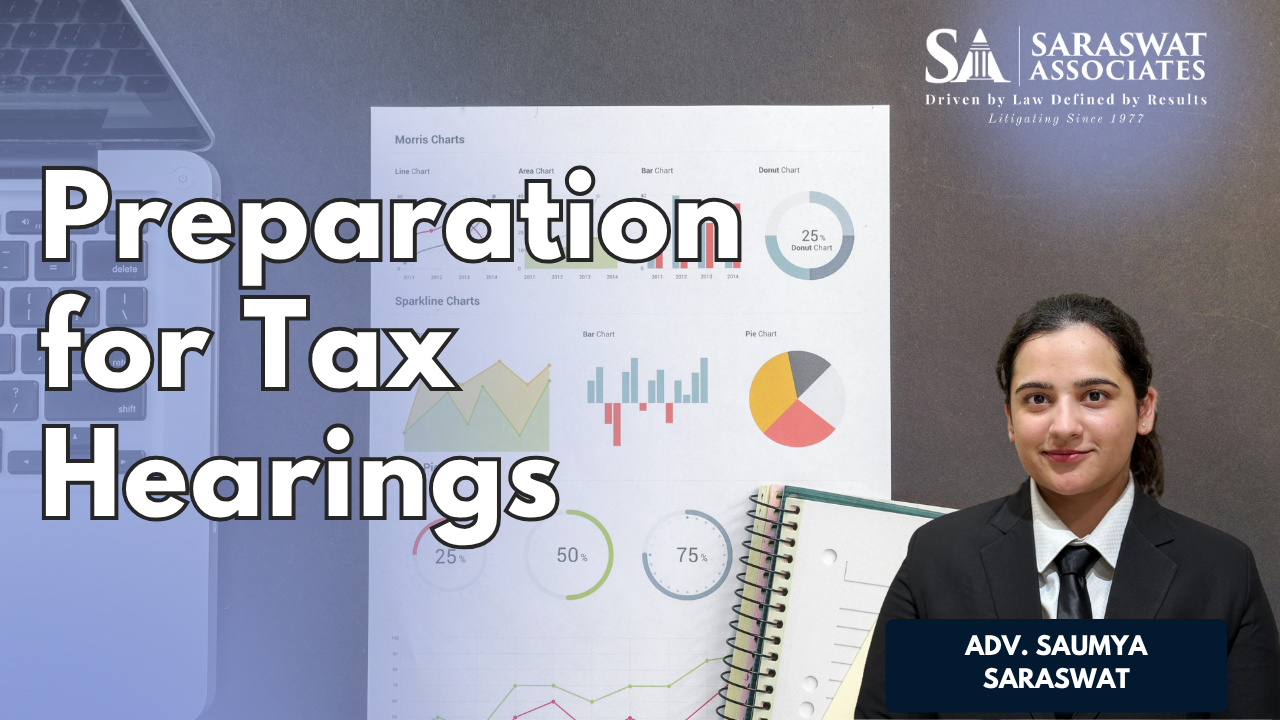Raipur
S-12, 2nd Floor Raheja Towers, Jail Road Near Hotel Celebration Raipur – 492001 (CG)
In the high-stakes world of tax litigation, victory is rarely a matter of chance. It is almost always the direct result of meticulous, painstaking preparation. While the merits of a case are paramount, the manner in which those merits are presented before an adjudicating authority can be the difference between a favourable order and a protracted legal battle. An unprepared counsel, no matter how brilliant, is fighting a losing battle from the outset.
For seasoned practitioners and clients alike, understanding the anatomy of effective hearing preparation is crucial. It is a disciplined process that transforms a collection of facts and legal provisions into a compelling, persuasive narrative. Here is a blueprint for preparing for your next tax hearing.
1. Master the Facts and the Record
The foundation of any strong case is an unshakeable command of the facts. Before delving into complex legal arguments, you must know the record inside out.
2. Build an Impeccable Paper Book
A well-prepared paper book is your most powerful tool in a hearing. It is not merely a compilation of documents; it is the story of your case, told logically and supported by evidence.
3. Fortify Your Legal Position
Facts provide the ‘what’; the law provides the ‘why’. Your legal research must be both broad and deep, creating an unbreachable fortress of legal reasoning.
4. Draft Clear and Concise Submissions
Your written submissions are the permanent record of your arguments. They should be drafted with the assumption that the adjudicator may rely solely on them to pass an order.
5. Rehearse the Oral Argument
The hearing is not the time to read your submissions aloud. It is an opportunity for a focused, persuasive dialogue with the bench.
Conclusion
Ultimately, preparation instills confidence—confidence in your case, your arguments, and your ability to navigate the complexities of the hearing. It allows you to present your case with clarity and conviction, transforming a potentially adversarial process into a structured dialogue aimed at achieving a just outcome. In the theatre of tax litigation, the best-prepared advocate almost always takes the final bow.
Established in 1977, Saraswat Associates is a leading Chhattisgarh-based law firm offering expert legal and tax solutions to corporates, firms, and individuals.
S-12, 2nd Floor Raheja Towers, Jail Road Near Hotel Celebration Raipur – 492001 (CG)
210 - 211, 1st Floor Modi Plaza, Above UCO Bank Carmel School Road Raigarh – 496001 (CG)
Copyright © 2025 CGGST | GST | Saraswat Associates | Chhattisgarh | India. Designed & Developed by Shlok It Solution


As per the rules of the Bar Council of India, we are not permitted to solicit work or advertise. By accessing this website (www.cggst.com), the user acknowledges and confirms the following:
The user wishes to gain more information about the Firm for their own information and use.
There has been no advertisement, personal communication, solicitation, invitation, or inducement of any sort whatsoever from the Firm or any of its members to solicit any work through this website.
The information about the Firm is provided to the user only on their specific request, and any information obtained or materials downloaded from this website is completely at the user's volition. Any transmission, receipt, or use of this site would not create any lawyer-client relationship.
The content provided on this website is for informational purposes only and should not be interpreted as soliciting or advertising. It does not constitute, and shall not be construed as, legal advice. The Firm shall not be liable for any consequences of any action taken by the user relying on material/information provided on this website.
The use of this website, including sending any communication to us through the website, does not create an attorney-client relationship. Such a relationship is established only through a formal, written engagement agreement executed between you and the Firm. Please do not send any confidential information to us until such a relationship has been established.
Our website features an AI-powered chatbot designed to provide general information and assistance. Please be aware of the following:
For Informational & Academic Purposes Only: The chatbot is an automated tool intended for general informational and academic purposes ONLY. The responses it generates are based on algorithms and pre-existing data and are not provided by a qualified advocate.
Not Legal Advice: The information or advice provided by the chatbot does NOT constitute legal advice and cannot be treated at par with professional advice from a qualified lawyer. It may contain inaccuracies, errors, or be outdated.
No Responsibility or Liability: Saraswat Associates expressly disclaims any and all responsibility and liability for any actions taken or not taken based on the chatbot's responses. You should not rely on any information provided by the chatbot for making any legal, financial, or personal decisions.
No Attorney-Client Relationship: Interacting with the AI chatbot does not, under any circumstances, create an attorney-client relationship.
We strongly advise you to consult with a qualified human advocate for advice on any specific legal issues.
Please read and accept our website’s Terms of Use and our Privacy Policy

